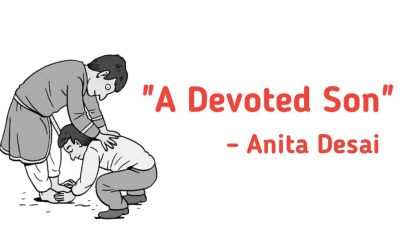
How does one develop this important skill? By actively engaging in "understanding, analysing, interpreting, synthesising, and evaluating". Here's how it can be done, as explained through the popular story A Devoted Son by Anita Desai.
Critical thinking, branded the century's most critical skill, is to be developed by actively engaging in “understanding, analyzing, interpreting, synthesizing, and evaluating”. For the mind to get habituated, one has to consistently practise them by means of whatever is read and heard consciously, until they become an unconscious process.
However, multiple social media platforms and the avalanche of information they dole out every second force people to be passive consumers. With hardly any time left for reflection, they are unable to sift facts from opinions and tend to accept even fake news as real stories. The adage, "A lie will travel halfway around the world while the truth is still pulling its boots on proves to be true. The innate longing for novelty paves way for false news to go viral and compel people into a manipulated universe.
The club members confessed that comprehending stories is a non-issue but they were uncertain of critically appreciating them by engaging in analysis, synthesis, and evaluation. And, they were convinced that the path to critical thinking was through stories as they were usually gripped by them. A film reviewer came to our rescue and referred to the popular story A Devoted Son by Anita Desai to concretise the discussion. Also, he encouraged us to read as many stories of our choice as possible from any anthology for cross-references.
He started off by listing out the aspects considered for a critical analysis, namely plot and plot development characters and characterisation, setting, point of view, theme, narrative technique, writers style, comparisons (with a writers other stories, and similar stories of others), and reviewers opinion. But he limited himself to the plot and plot development to avoid clutter.
A clear distinction was made by him between plot and story as these terms are often used interchangeably Story is the entire narrative which includes all the aspects but plot is just one of them. Plot is a series of events that form the story, including the order in which they occur and their relationship with each other. He then, highlighted the five integral parts of a plot exposition (introduction), rising action, climax falling action, and resolution (conclusion). He demonstrated these aspects and explained them diagrammatically.
Exposition: All the major characters are introduced- Rakesh, the central character, and his father. Varma. The setting is the ‘small yellow house’ in a ‘shabby colony’ and the relationship between the father and son as the theme begins to unfold. Also, the minor characters such as his mother and his wife appear at the beginning itself.
Rising action: Rakesh, the topper in the medical field, returns from the U.S., gets married to the girl of his mother's choice, becomes a famed doctor, sets up his own clinic and flourishes.
Climax: His father's retirement and his mother's death affecting his father to be totally broken and falling ill with mysterious diseases.
Falling action: The deterioration of his father’s health, denial of the food he longs for, forcing him to take medicines and tonics, his father wishing for his death rather than leading a prolonged miserable life.
Resolution: The death of his father despite his utmost care. (An ironic ending demonstrates how excessive devotion could lead to a torturous life.)
We all realised how our usual reading of stories, focussing on the storyline and ignoring the integral parts, remained at the superficial level. But an in-depth analysis, akin to a mechanic dismantling an engine to reassemble it after a thorough investigation, made us appreciate the story better.
Reflecting over anything that is read or heard is a must, prior to accepting or rejecting. But one must not fall prey to falsehoods. Let us rise above superficial comprehension and shallow responses by developing critical sensibility.
Picture Credit : Google




